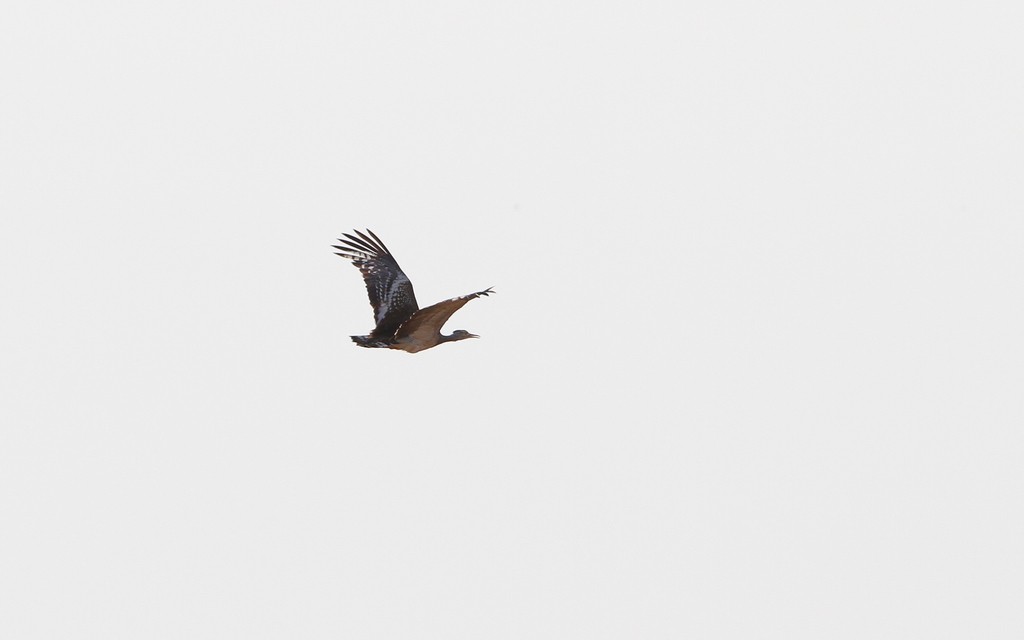Arabian Bustard
A species of Large Crested Bustards Scientific name : Ardeotis arabs Genus : Large Crested Bustards
Arabian Bustard, A species of Large Crested Bustards
Botanical name: Ardeotis arabs
Genus: Large Crested Bustards
Content
Description General Info
Description
As in all bustards, the male Arabian bustard is much larger than the female. Males have been found to weigh 5.7–10.9 kg (13–24 lb), while females weigh 4.5–7.7 kg (9.9–17.0 lb). The record-sized male Arabian bustard weighed 16.8 kg (37 lb). These birds stand from 70 cm (28 in) tall in females to 92 cm (36 in) tall in males. They are fairly similar in overall appearance to the kori bustard, with a brown body, gray neck and white underside, but are noticeably smaller, with a more elegant, slender build. They are also differ in having white checkered covert pattern at the end of the folded wing, as opposed to various black-and-white patterns as seen in other large African bustards. 
Size
1 m
Nest Placement
Ground
Feeding Habits
Arabian Bustard primarily consumes insects like grasshoppers and beetles, including locusts during swarms. They also eat small vertebrates and forage plant-based foods such as seeds, fruits, and acacia gum. Foraging behavior peaks in early morning and late afternoon, comprising up to 67% of their day.
Habitat
Arabian Bustard's habitat ranges from semi-desert and arid grassy plains to Acacia parklands and savannas. They are adept at living in various arid environments, such as open grasslands, bush country, and sparsely wooded areas, up to elevations of 920 meters. Access to water sources is essential for arabian Bustard, despite their capacity to inhabit regions far from them. Their preferred settings include sandy areas with either dense tall trees and sparse undergrowth or regions with lush ground vegetation and fewer trees. Cultivated fields and vegetated wadis are also within their habitat range.
Dite type
Omnivorous
General Info
Feeding Habits
Bird food type
Distribution Area
It is found in Algeria, Burkina Faso, Cameroon, Chad, Djibouti, Eritrea, Ethiopia, Guinea-Bissau, Iraq, Kenya, Mali, Mauritania, Morocco, Niger, Nigeria, Saudi Arabia, Senegal, Somalia, Sudan, and Yemen. It is a vagrant to Kenya, Gambia, northern Ivory Coast and northern Ghana. 
Species Status
Due to its wide range, it was not considered vulnerable by IUCN, although there is believed to have been a strong decrease in the population. In 2012 the species was uplisted to Near Threatened. The primary cause of the decrease appears to be heavy hunting pressure, with habitat degradation and destruction also playing a major role. The sedentary population recorded from Morocco, the subspecies A.a. lynesi, has not been definitely recorded since 1962, it is likely to be extinct. 
Scientific Classification
Phylum
Chordates Class
Birds Order
Bustards Family
Bustards Genus
Large Crested Bustards Species
Arabian Bustard 